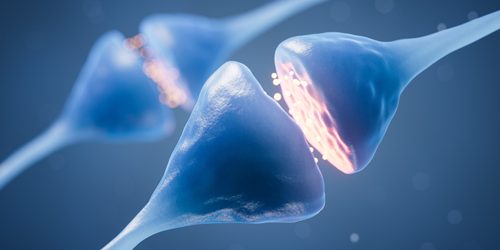More Informative Together Than Apart
The cells in our bodies, like those of all living things, encode information in so-called signaling molecules. Cells release these molecules to relay messages to other cells (for example, between neurons in the brain) and to send signals to themselves (which occurs during embryo growth). Cells also use these molecules to internally transmit information between elements of their soupy insides. The concentrations of these molecules constantly change, so researchers looking to understand a given cell-signaling process typically perform multiple measurements on the system, one after another. Now scientists at the Physics Laboratory of the École Normale Supérieure, France, show that those researchers could obtain more information from two measurements if they analyze them collectively, rather than sequentially [1].
Cell-signaling molecules exist in complex networks with equally complex dynamics. Over time, the concentration of a molecule type can relax to a steady state or rise and fall following many different temporal patterns. This concentration variation can also depend on the specific stimuli received by a cell. Researchers therefore believe that cells transmit information not only by the identity of the signaling molecule but by its temporal dynamics as well.
Others have looked at extracting time-dependent information of cell-signaling systems. But Thierry Mora, one of the scientists who undertook the new work, says those studies were largely experimental in nature and provided only estimation methods. Here the team developed a mathematical framework for signaling, deriving a way to exactly calculate the amount of information obtained in a dataset. Mora hopes that the finding will inspire experiments on signaling systems that are known to change over time. “The study was inspired by experiments, but the results have yet to be confirmed experimentally,” he says.
–Katherine Wright
Katherine Wright is the Deputy Editor of Physics Magazine.
References
- L. Hahn et al., “Dynamical information synergy in biochemical signaling networks,” Phys. Rev. Lett. 131, 128401 (2023).




